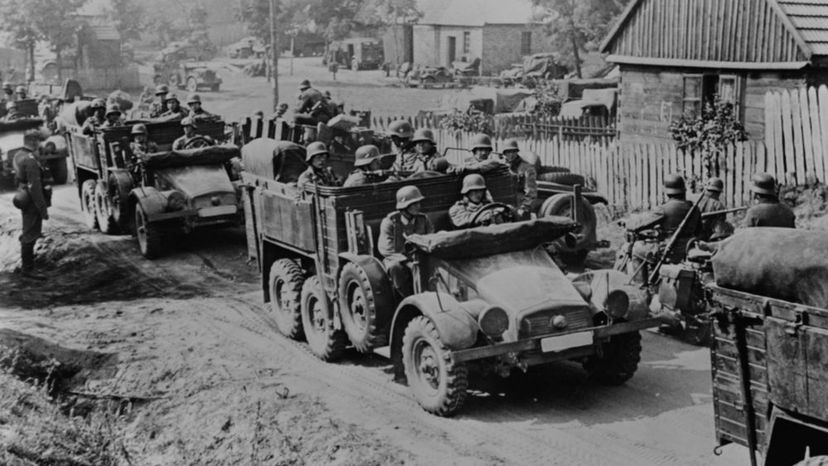
About This Quiz
Following the First World War, the Allied powers forced Germany to sign the Treaty of Versailles. This famous document ended the bloody Great War, but its oppressive terms humiliated Germany politically, culturally and economically, creating widespread discontent. One man knew just how to exploit that sense of German inferiority, slowly but surely giving rise to the Nazi Party.
Hitler seized the chancellorship. Then he began unfurling his devious plan to (illegally) build military might, thumbing his nose at diplomats the world over. He waited for the right moment and then struck. Do you know which country Hitler and his military first invaded? Which major Allied countries did they decide to attack next?
As the Nazis herded up innocents for death, the Japanese bombed Hawaii, drawing the United States into the conflict. Do you know the major battles of the Pacific Theater?
Across the globe, the Allies frantically bemoaned threats to freedom and democracy, steeling themselves for years of violence. Do you know the military leaders who organized the resistance to Axis aggression? Do you know how many people died trying to right the wrongs of Axis guns?
There is no way to quickly sum up the devastation of World War II. It was, quite simply, the deadliest conflict in human history. Grab your M-1, hold your Ka-Bar knife tight and plunge into our epic World War II quiz!
Advertisement
Advertisement
Advertisement
Advertisement
Advertisement
Advertisement
Advertisement
Advertisement
Advertisement
Advertisement
Advertisement
Advertisement
Advertisement
Advertisement
Advertisement
Advertisement
Advertisement
Advertisement
Advertisement
Advertisement
Advertisement
Advertisement
Advertisement
Advertisement
Advertisement
Advertisement
Advertisement
Advertisement
Advertisement
Advertisement
Advertisement
Advertisement
Advertisement
Advertisement
Advertisement